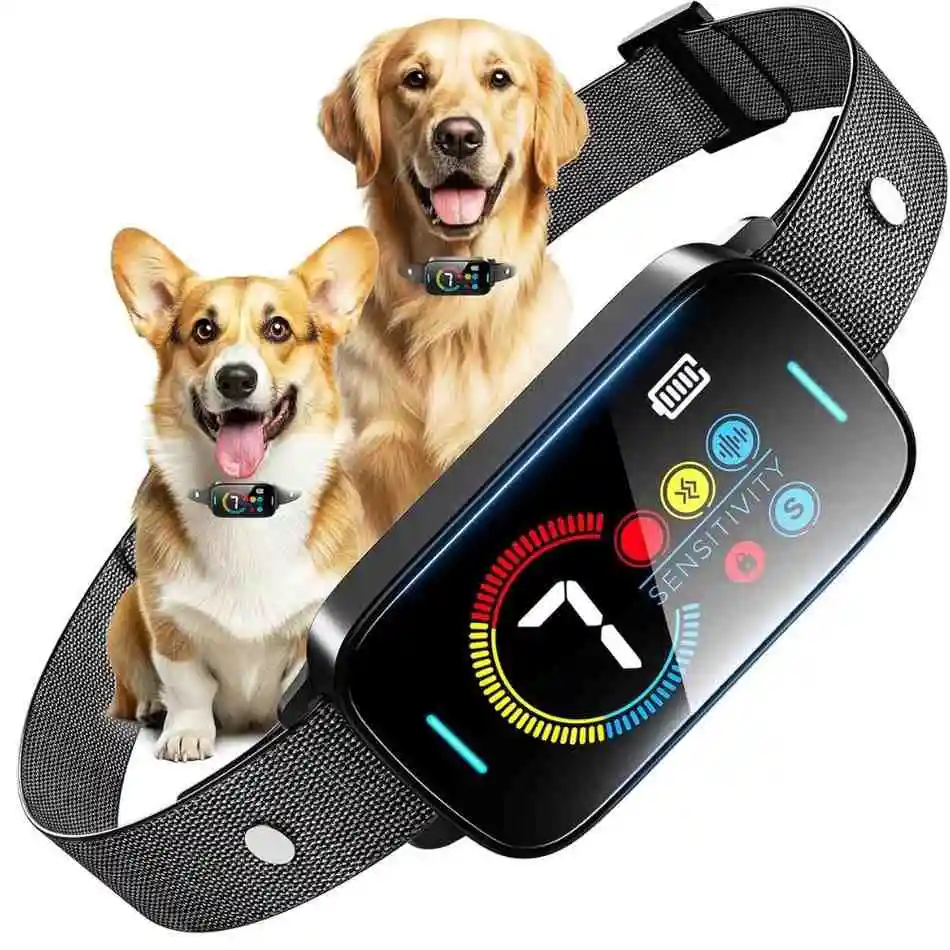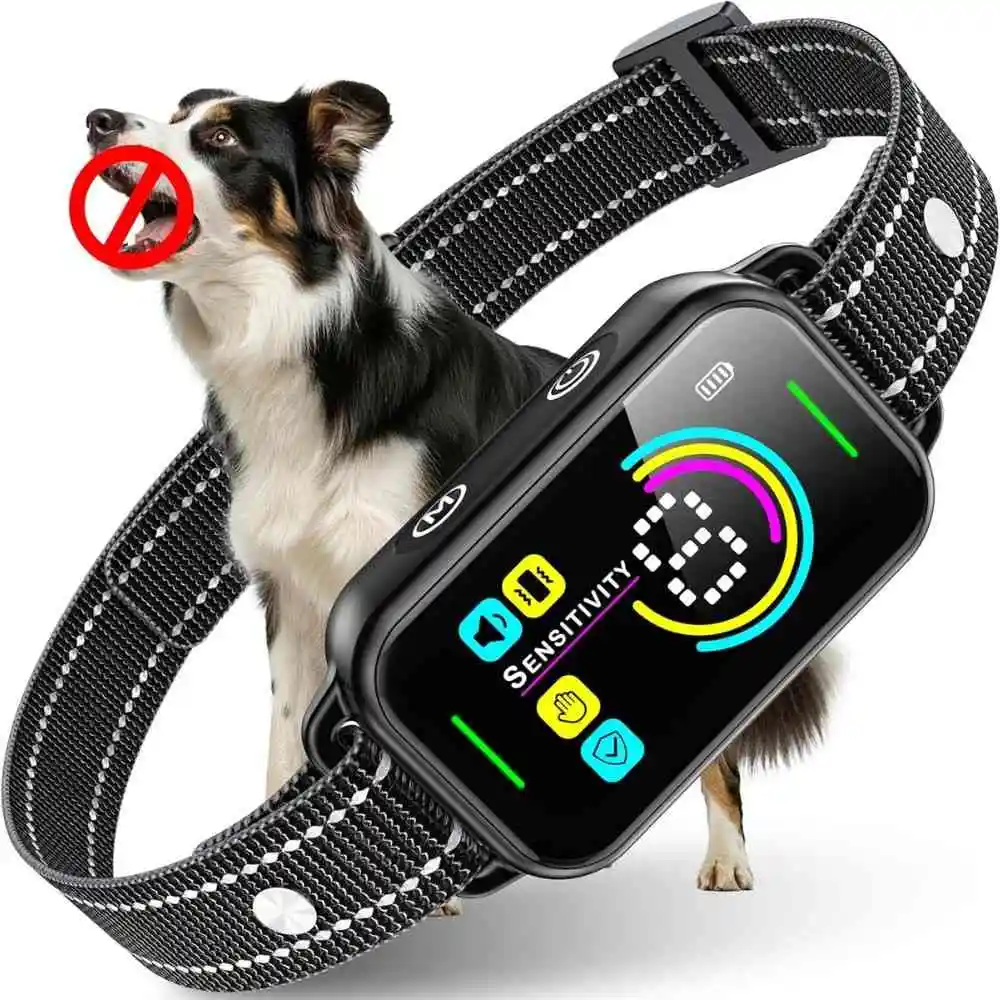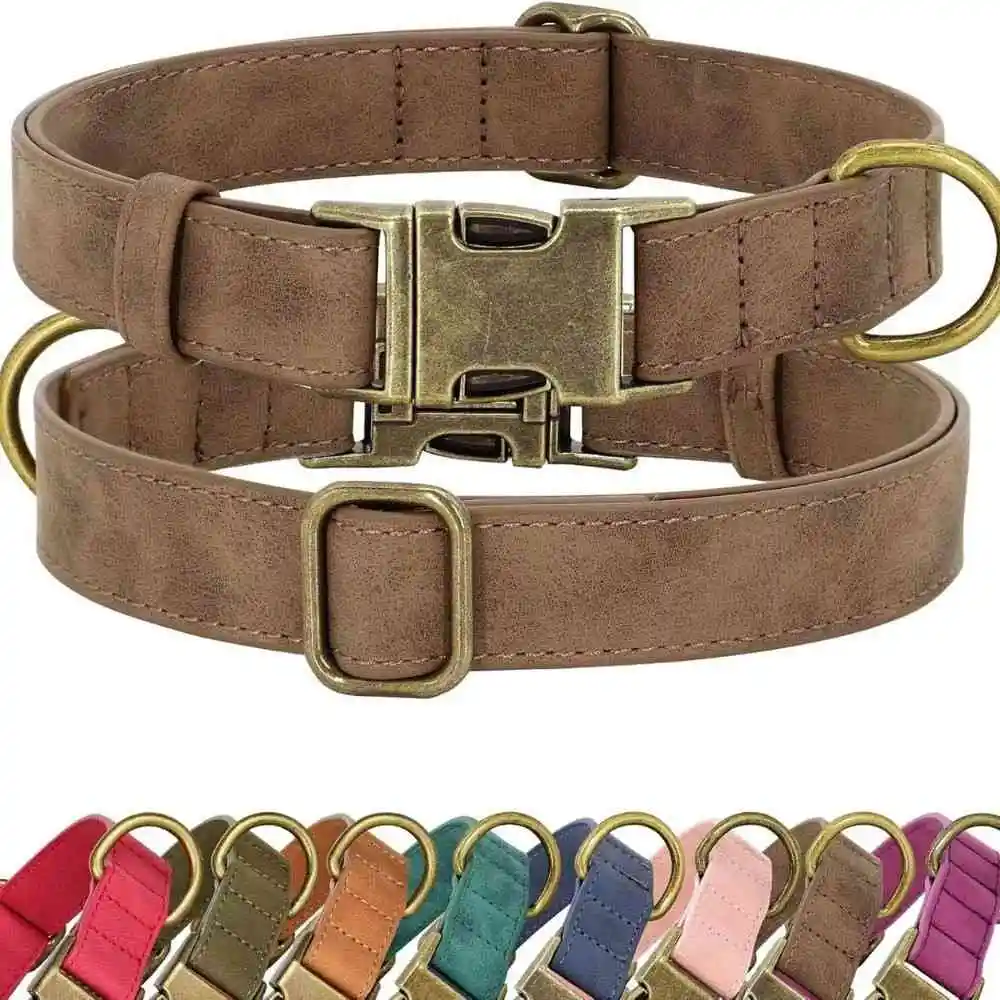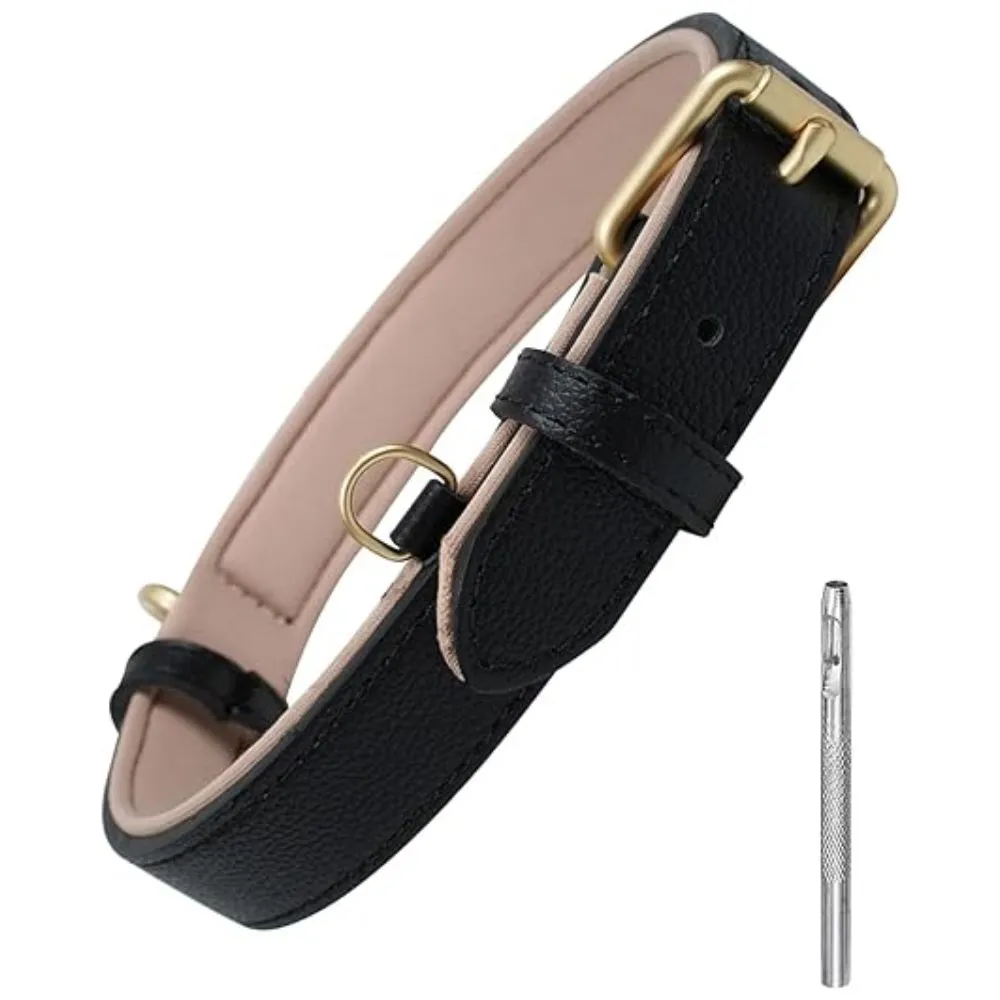The Complete Guide to Large Dog Collars: Choosing the Right Fit for Your Big Breed
Finding the right collar for your large dog isn’t just about grabbing the biggest size available. Whether you’re raising a German Shepherd, Rottweiler, Great Dane, or any other big breed, the collar you choose affects your dog’s comfort, safety, and training success.
In this comprehensive guide, we’ll walk you through everything you need to know about dog collars for large dogs—from understanding different types and materials to selecting the perfect fit and addressing specific needs like barking control and training. By the end, you’ll have the confidence to make the best choice for your four-legged friend.

Why the Right Large Dog Collar Matters
Large dogs require collars that can handle their strength and size. An improperly fitted or weak collar can:
- Break during walks, putting your dog at risk
- Causes discomfort or skin irritation
- Fail to provide adequate control during training
- Create safety hazards in emergencies
The right large dog collar provides security, comfort, and functionality while supporting your dog’s health and well-being.
Understanding Different Types of Large Dog Collars
Standard Flat Collars
The most common type of large dog collar, flat collars are perfect for everyday wear and ID tag attachment. Look for options made from durable materials like:
- Heavy-duty nylon: Lightweight, waterproof, and easy to clean—large nylon dog collars are ideal for active dogs who love swimming or playing in mud
- Genuine leather: Classic and durable, leather collars become more comfortable with age and work well for dogs with sensitive skin
- Biothane: A waterproof alternative to leather that doesn’t absorb odors or moisture
A quality flat collar should be 1.5 to 2 inches wide for large breeds to distribute pressure evenly across the neck.
Martingale Collars
Martingale collars provide more control than standard flat collars without the choking effect of slip collars. These are excellent for large dogs who:
- Tend to back out of regular collars
- Pull on the leash during walks
- Have necks wider than their heads (like Greyhounds or Whippets)
The design gently tightens when your dog pulls, discouraging the behavior without causing harm.
Training Collars for Large Dogs
Training collars for large dogs come in several varieties, each designed for specific behavioral needs:
Prong Collars: Distribute pressure evenly around the neck, useful for dogs who pull excessively. However, these should only be used under professional guidance to avoid injury.
Head Collars: These work like a horse halter, giving you control over your dog’s head direction. They’re excellent for strong pullers and help redirect attention during training.
Electronic Training Collars: Modern e-collars offer adjustable stimulation levels and are used by professional trainers for off-leash training and behavior modification. Always start with the lowest settings and consider professional training support.
Bark Collar for Large Dogs
When you need to address excessive barking, a bark collar for large dogs can be an effective tool. Modern barking collar for large dogs options include:
Vibration Bark Collars: Detect barking vibrations and respond with a gentle vibration to interrupt the behavior—no shock required.
Ultrasonic Collars: Emit a high-pitched sound only dogs can hear when barking is detected.
Static Correction Collars: Deliver a mild static pulse, similar to a static shock from carpet. These have adjustable levels and should start at the lowest setting.
Spray Bark Collars: Release a burst of citronella or unscented spray when your dog barks—an effective, humane alternative many dogs respond to well.
Important: Bark collars should never be used for more than 12 hours per day, and they’re not suitable for dogs who bark due to anxiety, fear, or medical issues. Always identify the root cause of excessive barking first.
Seresto Flea Collar for Dogs Large
The Seresto flea collar for large dogs has become a popular choice among large breed owners because it combines pest protection with everyday wear. This collar:
- Provides up to 8 months of flea and tick protection
- Releases controlled doses of active ingredients over time
- Is water-resistant (though effectiveness decreases with frequent bathing)
- Eliminates the need for monthly topical treatments
While not a replacement for a regular ID collar, many owners use the Seresto as a secondary collar or alternate between the two. Always monitor your dog when first using any flea collar to ensure they don’t have an adverse reaction.

How to Choose the Right Size Large Dog Collar
Proper sizing is crucial for safety and comfort. Here’s how to measure and fit a large dog collar correctly:
Measuring Your Dog’s Neck
- Use a soft measuring tape or string
- Measure around the widest part of your dog’s neck (where the collar naturally sits)
- Add 2-3 inches to this measurement for the collar size
The Two-Finger Rule
Once the collar is on, you should be able to comfortably fit two fingers between the collar and your dog’s neck. This ensures:
- The collar won’t slip off over the head
- Your dog can breathe, eat, and drink comfortably
- There’s no risk of choking or excessive pressure
Weight and Breed Considerations
Most large dog collar manufacturers provide sizing charts based on both neck circumference and weight:
- Large dogs (50-90 lbs): Typically need 18-26 inch collars
- Extra-large dogs (90+ lbs): Usually require 24-30+ inch collars
Breeds like Mastiffs, St. Bernards, and Great Danes may need custom-sized collars due to their substantial neck circumference.
Materials That Work Best for Large Dogs
The material you choose affects durability, comfort, and maintenance:
Large Nylon Dog Collars
Pros:
- Affordable and available in countless colors and patterns
- Machine washable and quick-drying
- Lightweight yet incredibly strong
- Won’t stretch or crack with age
Cons:
- Can cause matting in long-haired breeds
- May fray if your dog is a heavy chewer
Large nylon dog collars are excellent for everyday use and work particularly well for active dogs who enjoy outdoor adventures.
Leather Collars
Pros:
- Durable and long-lasting when properly maintained
- Softens over time for increased comfort
- Less likely to cause hair breakage
- Classic, timeless appearance
Cons:
- Requires conditioning to prevent cracking
- Not ideal for water-loving dogs
- More expensive upfront investment
Chain Collars
Pros:
- Virtually indestructible
- Easy to clean
- Provides a distinctive sound that some owners find useful
Cons:
- Heavy and can be uncomfortable for extended wear
- Can damage furniture and flooring
- Risk of rust if not made from stainless steel
- Not suitable for everyday use—training purposes only
Safety Features to Look For
When shopping for a large dog collar, prioritize these safety elements:
Reflective Stitching or Materials
Reflective collars or those with reflective stitching significantly improve visibility during early morning or evening walks, reducing accident risk.
Sturdy Hardware
Check that all buckles, D-rings, and fasteners are:
- Made from rust-resistant metal (stainless steel or brass)
- Properly welded without gaps
- Sized appropriately for your dog’s strength
Quick-Release or Breakaway Options
Some collars feature quick-release buckles that allow you to remove the collar quickly in emergencies. However, these should be strong enough that they don’t accidentally release during normal activity.
Double D-Ring Design
Collars with two D-rings offer flexibility—one for leash attachment and another for ID tags, keeping tags from interfering with leash control.

When to Replace Your Large Dog Collar
Even the highest-quality collars wear out over time. Replace your dog’s collar when:
- Fabric shows signs of fraying or tearing
- Stitching is coming loose
- Buckles become difficult to fasten or unfasten
- Leather cracks or becomes stiff
- Your dog has a growth spurt (especially for puppies)
- Hardware shows rust or corrosion
Most nylon and leather collars last 1-3 years with regular use, though this varies based on your dog’s activity level and the collar’s quality.
Training Tips for Large Dog Collars
Successfully using training collars for large dogs requires patience and consistency:
- Start Young: Introduce collar wearing early so puppies become accustomed to the sensation
- Positive Association: Offer treats and praise when putting on the collar
- Gradual Introduction: For specialized collars like martingales or bark collars, let your dog wear them for short periods before using their training functions
- Proper Fit: Recheck fit weekly, especially during a puppy’s growth phases
- Consistency: Use the same collar for specific activities—this helps your dog understand expectations
Common Mistakes to Avoid
Leaving Collars On 24/7
While keeping ID on your dog is important, consider removing collars during:
- Crate time (to prevent catching and choking hazards)
- Rough play with other dogs
- Sleep time at home
Choosing Fashion Over Function
That adorable designer collar might look great, but if it’s not built for your large dog’s strength, it’s a safety risk. Always prioritize quality and durability.
Using the Wrong Collar Type
Never use a bark collar for regular walking, or a thin decorative collar for training a strong puller. Each collar type serves a specific purpose.
Ignoring Wear and Tear
Regularly inspect your dog’s collar for damage. What looks like minor wear can quickly become a breaking point during an unexpected situation.

Frequently Asked Questions
What size collar does a large dog need?
Large dogs typically need collars between 18 and 26 inches, but always measure your dog’s neck circumference and add 2-3 inches. The correct fit allows you to comfortably fit two fingers between the collar and your dog’s neck.
Are bark collars safe for large dogs?
Yes, when used correctly. Modern barking collar for large dogs options include humane vibration and ultrasonic models. Always start with the lowest settings, never use for more than 12 hours daily, and address the underlying cause of excessive barking.
What’s the best material for large dog collars?
Large nylon dog collars offer the best balance of durability, affordability, and low maintenance. Leather is excellent for dogs with sensitive skin, while Biothane combines the best of both materials. Choose based on your dog’s lifestyle and any skin sensitivities.
How tight should a large dog collar be?
Use the two-finger rule: you should fit two fingers comfortably between the collar and your dog’s neck. It should be snug enough not to slip over the head but loose enough for comfort during all activities.
Can I use a regular collar with the Seresto flea collar for large dogs?
Yes, many owners use both. The Seresto flea collar for dogs large can be worn alongside a regular ID collar, though some prefer to alternate between the two. Ensure neither collar is too tight when wearing both simultaneously.
When should I use training collars for large dogs?
Training collars for large dogs are beneficial when standard collars don’t provide adequate control, such as with excessive pulling or off-leash training. Always introduce training collars gradually and consider working with a professional trainer, especially for electronic or prong collar use.
How often should I replace my dog’s collar?
Inspect collars monthly and replace them every 1-3 years, depending on wear. Replace immediately if you notice fraying, broken stitching, damaged hardware, or any structural weakness.
Final Thoughts
Choosing the right large dog collar is an investment in your dog’s safety, comfort, and training success. Whether you need a durable everyday collar, specialized training collars for large dogs, or a bark collar for large dogs to address excessive vocalization, understanding your options helps you make informed decisions.
Remember that the most expensive collar isn’t always the best—focus on proper fit, appropriate materials for your dog’s lifestyle, and quality construction. Your large breed deserves a collar that keeps them safe while supporting their unique needs.
Take time to measure carefully, choose materials suited to your dog’s activities, and regularly inspect for wear. With the right collar and proper care, you’ll ensure your large dog stays comfortable and secure for years to come.
